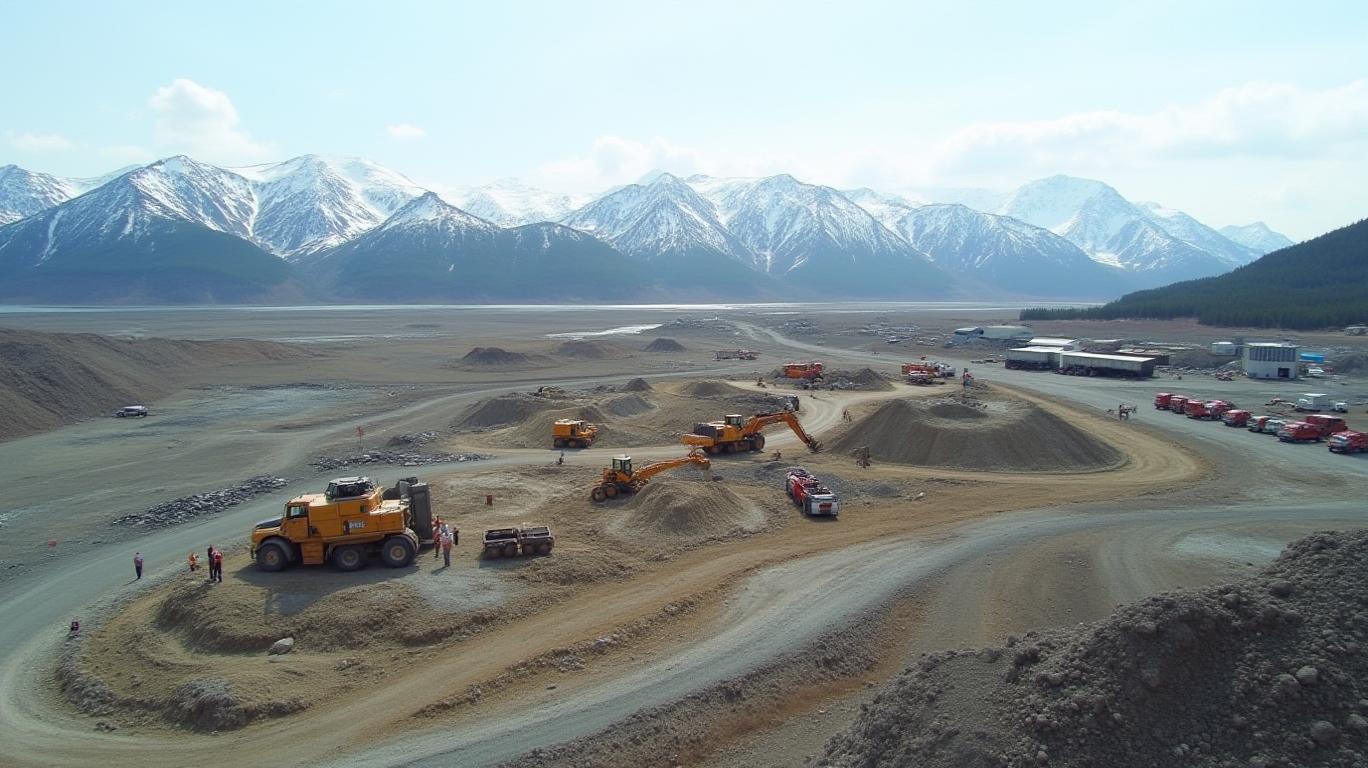International Tower Hill Mines: Navigating Exploration Challenges in Q1 2025
International Tower Hill Mines (ITH) has released its unaudited first-quarter 2025 financial results, offering a glimpse into its ongoing pursuit of advancing the Livengood Gold Project in Alaska. While the company remains in the pre-production phase—reporting no revenue—the quarter underscored its reliance on equity financing to fund exploration and its growing operational expenses. Below is an analysis of the key metrics, strategic initiatives, and risks shaping ITH’s investment narrative.

Financial Performance: Costs Rise, Cash Rises Too
ITH reported a net loss of $669,068 for Q1 2025, a 22.7% increase from the $545,308 loss in Q1 2024. This widening deficit stems from higher operating expenses, particularly in consulting fees (+92%) and mineral property expenditures (+14%), driven by environmental baseline studies and metallurgical research on antimony mineralization.
Despite the losses, cash reserves surged to $4.26 million by March 31, 2025—up from $992,000 at year-end 2024—thanks to a $3.9 million private placement completed in March. This financing, primarily from existing major shareholders, injected liquidity to fund the $3.7 million 2025 work program, which includes:
- $900,000 for mineral property leases and regulatory fees.
- $2.8 million for general and administrative costs, including community engagement and permitting activities.
Strategic Priorities: Progress on Livengood and Antimony
The Livengood Gold Project, ITH’s crown jewel, holds 430.1 million tonnes of gold resources at 0.65 g/t (9.0 million ounces proven/probable) and 274.5 million tonnes at 0.52 g/t (4.62 million ounces indicated). Q1 2025 saw two critical initiatives:
1. Metallurgical Study: Evaluation of antimony-rich stibnite deposits could unlock additional revenue streams, potentially boosting the project’s economic viability.
2. Environmental Baseline Work: Hydrology studies and waste rock assessments aim to streamline permitting, a critical hurdle for advancing toward production.
Risks and Challenges: Funding and Permitting Uncertainties
ITH’s financial health hinges on its ability to secure further capital. While current cash may fund operations for 12 months, the company admits it requires “significant additional financing” to progress beyond exploration. Key risks include:
- Market Volatility: The stock’s $0.4975 share price (as of Feb 2025) and a market cap of ~$93.9 million reflect investor skepticism about the company’s path to profitability.
- PFIC Status: U.S. shareholders face potential tax complexities due to the company’s classification as a Passive Foreign Investment Company.
- Permitting Delays: Environmental studies could take longer than anticipated, increasing costs and delaying project timelines.
Technical and Market Outlook
Technical analysis highlights mixed signals:
- Positive Momentum: The stock’s recent price surge, fueled by antimony study optimism, aligns with a “Buy” sentiment from technical indicators.
- Valuation Concerns: A Price-to-Cash Flow ratio of -18.7x (due to negative cash flow) underscores the speculative nature of the investment.
Conclusion: A High-Reward, High-Risk Gamble
International Tower Hill Mines presents a compelling opportunity for investors willing to bet on its flagship Livengood Gold Project. The $3.9 million private placement and progress on antimony studies are positive steps, but the company’s reliance on equity markets and permitting timelines pose material risks.
Key Takeaways:
- Upside: The Livengood Project’s scale (16.5 million ounces in measured/indicated resources) and antimony diversification offer long-term value.
- Downside: Persistent losses, cash burn (~$660K/quarter), and the need for further financing could strain investor patience.
For now, ITH remains a high-risk, high-reward play. Investors should monitor cash reserves closely and watch for permitting milestones or equity raises. Without a revenue stream, the company’s survival hinges on its ability to balance exploration costs with capital market access—a tightrope walk in today’s volatile mining sector.

Comments
No comments yet